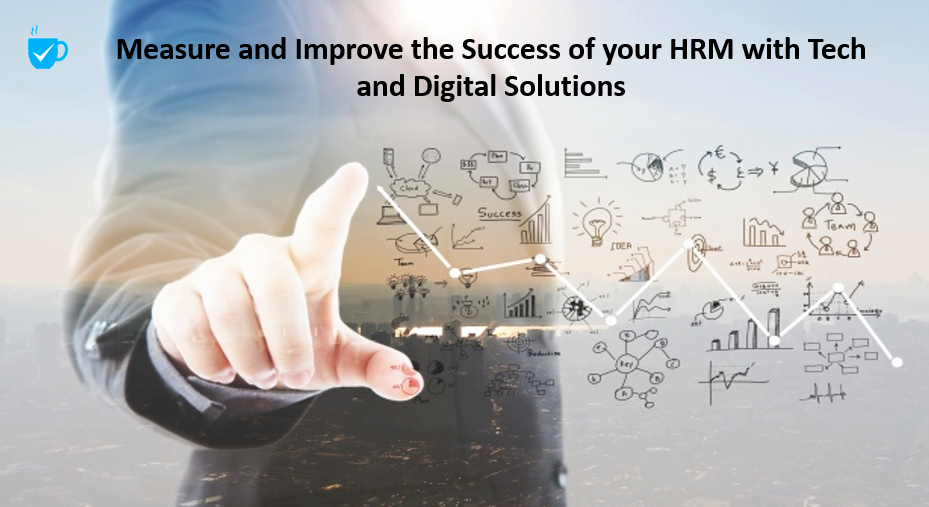
We have started using technology more than ever in an attempt to increase the effectiveness of our strategies and the productivity of our businesses. Digital solutions, software tools, and tech gimmicks, in general, allow us to boost our communication, track our performance, and make changes as we move forward with our business decisions. As years go by, hiring is becoming more intertwined with digital and tech precisely so that businesses can make smarter hiring decisions, stay within the bounds of the law, and make their employees happy.
However, the HR game is changing and becoming more complex by the minute. We now have companies with employees scattered across the globe, working with freelancers, cross-training to help people transition from one department to another, and the like. In order to maximize the effectiveness of your technological implementations, you need to learn which metrics to keep an eye on, and how to utilize those tech tools to measure, track, and boost your human resources management in general.
Project management to track workload distribution
If you’ve started running a business a while back, you know that there are many moving pieces within every company. They, however, are not separate in any way. As much as your marketing team may seem to exist independently of your IT crew or your kitchen staff, each and every employee has a direct and indirect impact on the success of every other employee in your business. We all know that great coffee fuels many a great brainstorming session, while smooth back-end processes enable every strategy to be deployed successfully. Delay a single piece of the puzzle, and the rest will be affected.
That is precisely why the use of PM platforms can directly help your HRM strategy. By keeping track of workload distribution, how well your employees manage deadlines, if they are able to communicate their requirements, and the like, you can make sure that everyone gets a fair chance to contribute to your business. There’s no need for one person to put in ten hours on one project while the rest pitch in with no more than two.
Digital Diversification to boost recruiting and retention
How well do you keep track of your hiring methods, their success rates, and the retention rates for each recruitment strategy? Most companies focus on creating stellar ads, writing great job descriptions, and building appealing career pages to attract potential candidates. But without tracking which of those strategies has yielded the best results, you’ll end up spending too much for tactics that don’t work and too little for those that bring in the best candidates.
This has become especially relevant in regions that are developing very quickly, such as Australia, and where employee retention is a priority because of many competitors eager to snatch an asset from under your very nose. It turns out that locals often look for jobs in Melbourne and other urban metropolises on reputable websites and digital platforms, hence the need for your brand to build a presence where candidates will actually look for work. This, in turn, increases your chances to find the right talent and inspire them to stay with you for longer as you’re able to cherry-pick the most qualified candidates that will thrive under your wing.
Automation to enhance interaction
The very essence of HRM is ensuring that both the business and its employees are happy with the collaboration. However, a part of the department’s responsibilities includes dealing with red-tape, which reduces the time each HR representative can spend face-to-face with employees, helping them resolve issues, or integrate into their new work environment with ease. Enter: digital tools that help take the bureaucratic edge off from your HR crew with automation.
Instead of sifting through piles of legal paperwork to make sure you’re compliant with the law when working with subcontractors and freelancers, why not use a payroll solution that does that for you? The very same software can be used to take other salary and tax-related issues off your hands, giving you more time to devote to training, risk mitigation, and employee engagement. Running a massive corporation will be a significantly easier task when you have peace of mind when it comes to paperwork.
Employee engagement to measure employee success
Another complex and time-consuming aspect of your HRM strategy involves performance reviews, gathering feedback from employees, and setting up face-to-face meetings to provide guidance in order to improve their performance for the future. It’s a never-ending loop: you need the right company-wide tools to keep an eye on each employee’s performance, a way to objectively summarize the data into reports, actively gather feedback on a regular basis, and deliver a tailor-made solution that implements the gathered data to enhance performance.
Luckily, tech steps in to save the day once again. Businesses can now use dedicated review tools that come with customization templates you can tweak to your specific business needs. As your business evolves, you can update goals, track different metrics, and use the data to make sure that both parties are happy.
Tech tools to simplify benefits and perk distribution
Finally, one of the main reasons each employee chooses to work with you instead of someone from the long list of your competitors is the treatment they receive from your business. If you offer personalized perks and specific health benefits, if you accommodate employees with disabilities, and if you provide unique parental perks such as flexible hours and childcare on-site, you need a system to keep track of it all.
To deal with this particular aspect of your HRM, you can implement a benefits management solution that allows you the flexibility and the ongoing insights into your benefits plan for each employee.
Modern-day HRM heavily depends on tech and digitization to maximize your business success. Give your HRM a tech makeover, and you’ll maximize your ROI, as well as your employee success and happiness.

